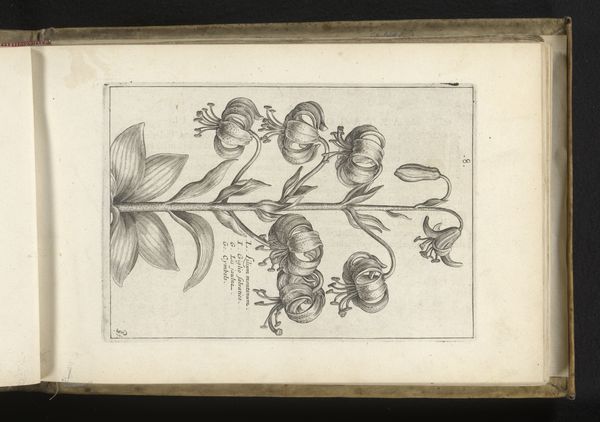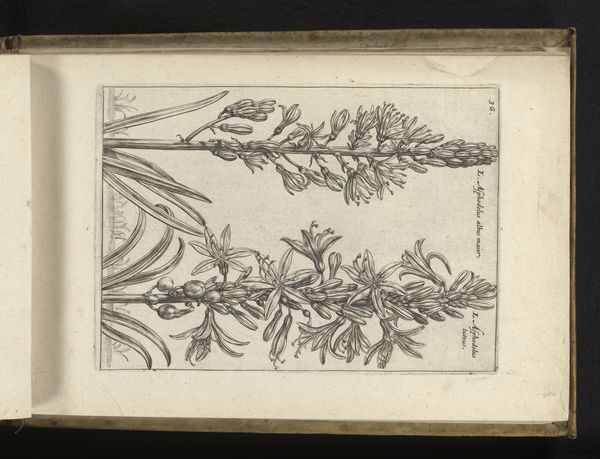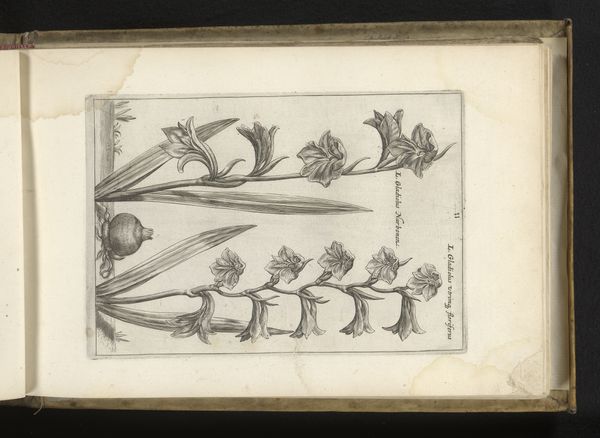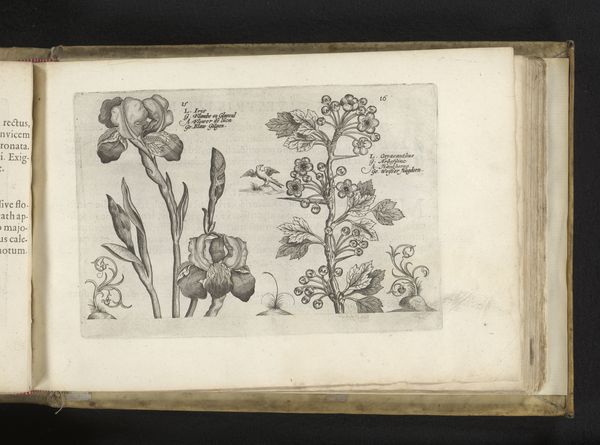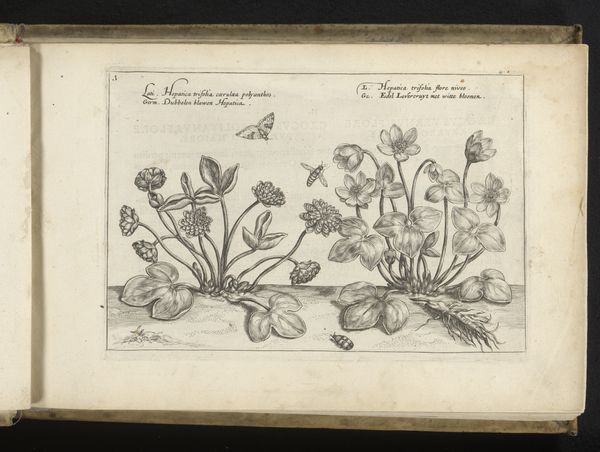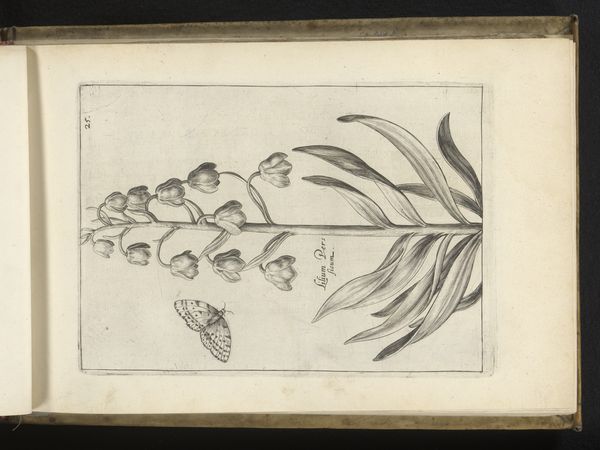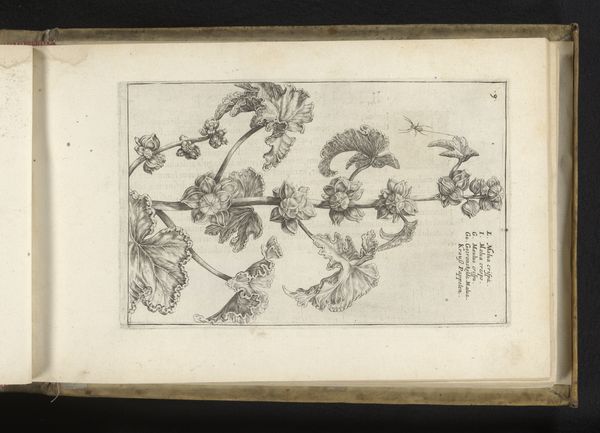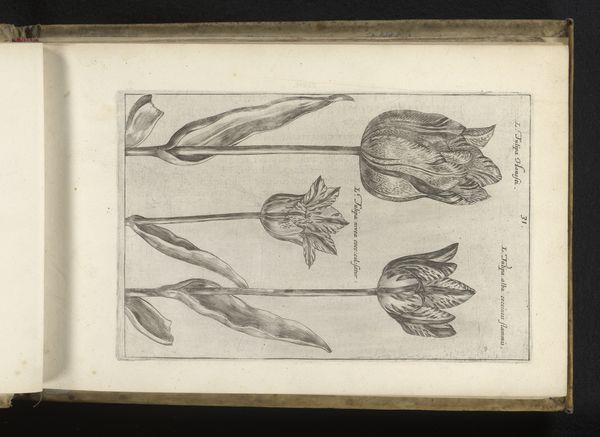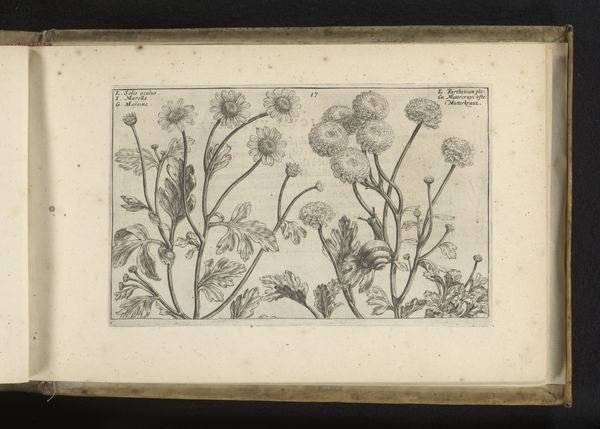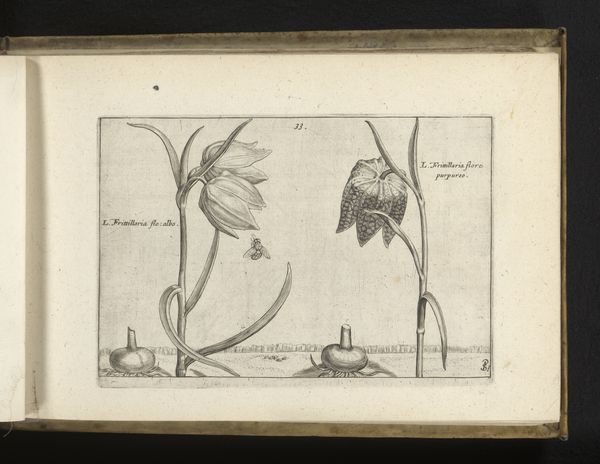
drawing, print, engraving
#
drawing
#
aged paper
# print
#
pen sketch
#
sketch book
#
landscape
#
flower
#
personal sketchbook
#
pen-ink sketch
#
pen and pencil
#
line
#
pen work
#
sketchbook drawing
#
storyboard and sketchbook work
#
sketchbook art
#
engraving
Dimensions: height 206 mm, width 146 mm
Copyright: Rijks Museum: Open Domain
This ‘Turkse lelie’ print was made by Willem de Passe, sometime in the early 17th century. It's an engraving, meaning the artist would have used a tool called a burin to cut lines into a metal plate, which was then inked and printed. Look closely, and you'll notice the incredibly fine lines. De Passe wasn't just copying nature; he was translating it into the precise, repeatable language of printmaking. The lines create areas of light and shadow, giving the flat image a sense of depth and volume. Engravings like this weren't just about art. They were about knowledge, commerce, and communication. Botanical prints circulated widely, allowing people to study and identify plants, and they were also used in the burgeoning market for luxury goods like textiles and ceramics. Think of the labor involved: the careful observation, the skilled hand of the engraver, and the mechanical process of printing. This image embodies the intersection of art, science, and early capitalism. It reminds us that even the most delicate artwork is rooted in material processes and social contexts.
Comments
No comments
Be the first to comment and join the conversation on the ultimate creative platform.
